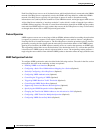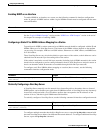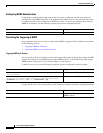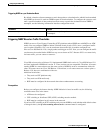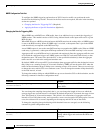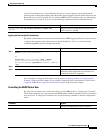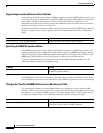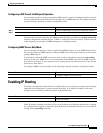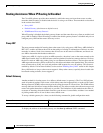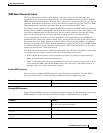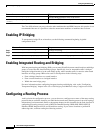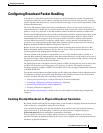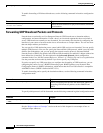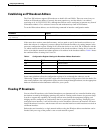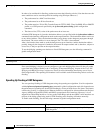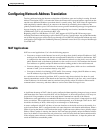
Configuring IP Addressing
Enabling IP Routing
IPC-28
Cisco IOS IP Configuration Guide
Routing Assistance When IP Routing Is Disabled
The Cisco IOS software provides three methods by which the router can learn about routes to other
networks when IP routing is disabled and the device is acting as an IP host. These methods are described
in the sections that follow:
• Proxy ARP
• Default Gateway (also known as default router)
• ICMP Router Discovery Protocol
When IP routing is disabled, the default gateway feature and the router discovery client are enabled, and
proxy ARP is disabled. When IP routing is enabled, the default gateway feature is disabled and you can
configure proxy ARP and the router discovery servers.
Proxy ARP
The most common method of learning about other routes is by using proxy ARP. Proxy ARP, defined in
RFC 1027, enables an Ethernet host with no knowledge of routing to communicate with hosts on other
networks or subnets. Such a host assumes that all hosts are on the same local Ethernet, and that it can
use ARP to determine their hardware addresses.
Under proxy ARP, if a device receives an ARP request for a host that is not on the same network as the
ARP request sender, the Cisco IOS software evaluates whether it has the best route to that host. If it does,
the device sends an ARP reply packet giving its own Ethernet hardware address. The host that sent the
ARP request then sends its packets to the device, which forwards them to the intended host. The software
treats all networks as if they are local and performs ARP requests for every IP address. This feature is
enabled by default. If it has been disabled, see the section “Enabling Proxy ARP” earlier in this chapter.
Proxy ARP works as long as other routers support it. Many other routers, especially those loaded with
host-based routing software, do not support it.
Default Gateway
Another method for locating routes is to define a default router (or gateway). The Cisco IOS software
sends all nonlocal packets to this router, which either routes them appropriately or sends an IP Control
Message Protocol (ICMP) redirect message back, telling the router of a better route. The ICMP redirect
message indicates which local router the host should use. The software caches the redirect messages and
routes each packet thereafter as efficiently as possible. The limitations of this method are that there is
no means of detecting when the default router has gone down or is unavailable, and there is no method
of picking another device if one of these events should occur.
To set up a default gateway for a host, use the following command in global configuration mode:
To display the address of the default gateway, use the show ip redirects EXEC command.
Command Purpose
Router(config)# ip default-gateway ip-address
Sets up a default gateway (router).



